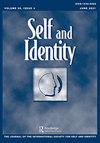成年后期自我连续性的生命周期发展:实足年龄、失去伴侣和童年厌恶事件的影响
IF 2.1
4区 心理学
Q3 PSYCHOLOGY, SOCIAL
引用次数: 1
摘要
自我连续性是一个连接过去和现在的核心身份过程。关于自我延续的生命历程决定因素及其在以后生活中的发展的研究是有限的。我们使用多层次模型来研究生活过程中逆境(如童年逆境或失去伴侣)的发生和资源的积累如何影响中后期的自我连续性,包括其水平和随时间的变化。使用三波纵向数据集。样本包括离婚者(n=396)、寡妇和鳏夫(n=319)以及后半生的已婚人士(对照组;n=513)。与已婚和丧偶的人相比,离婚者的自我延续程度最低。所有婚姻状况组的自我延续性都随着年龄的增长而增加,但遵循不同的轨迹。就自我延续的水平和发展而言,离婚者是最脆弱的群体。所有群体的童年逆境越多,自我连续性越差,这表明远端逆境对以后的生活认同过程的影响。我们的研究结果表明,自我连续性随着年龄的变化而变化,但根据整个生命过程中经历的不良事件而有所不同。本文章由计算机程序翻译,如有差异,请以英文原文为准。
Life Span Development of Self-Continuity in late Adulthood: The Impact of Chronological Age, Loss of Partner and Aversive Childhood Events
ABSTRACT Self-continuity is a central process of identity that connects one’s past and present. Research is limited regarding the life-course determinants of self-continuity and its development in later life. We used multilevel hierarchical models to investigate how the occurrence of life-course adversity (e.g., childhood adversity or partner loss) and the accumulation of resources shapes the perception of self-continuity in mid and later life, with respect to both their levels and changes over time. A three-wave longitudinal data set was used. The sample consisted of divorcees (n = 396), widows and widowers (n = 319), and married individuals (control; n = 513) in the second half of life. The divorcees had the lowest levels of self-continuity compared to the married and widowed individuals. Self-continuity increased with age for all marital status groups but followed differential trajectories. The divorcees were the most vulnerable group regarding their level and development of self-continuity. More childhood adversity was associated with less self-continuity for all groups, showing the influence of distal adversity on later life identity processes. Our findings illustrate that self-continuity changes as a function of age but differs based on the adverse events experienced across the life course.
求助全文
通过发布文献求助,成功后即可免费获取论文全文。
去求助
来源期刊

Self and Identity
PSYCHOLOGY, SOCIAL-
CiteScore
5.10
自引率
5.00%
发文量
26
期刊介绍:
Work on self and identity has a special place in the study of human nature, as self-concerns are arguably at the center of individuals" striving for well-being and for making sense of one"s life. Life goals develop and are influenced by one"s view of what one is like, the way one would ideally like to be (or would like to avoid being), as well as one"s perceptions of what is feasible. Furthermore, conceptions of self and the world affect how one"s progress towards these goals is monitored, evaluated, redirected, re-evaluated, and pursued again. Thus, the “self” as a construct has far-reaching implications for behavior, self-esteem, motivation, experience of emotions and the world more broadly, and hence for interpersonal relationships, society, and culture.
 求助内容:
求助内容: 应助结果提醒方式:
应助结果提醒方式:


